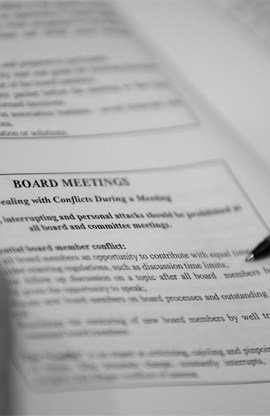Summer is officially here and many associations across the valley take a momentary “break” from association business to enjoy the summer. If your association board holds less meetings over the course of the summer it is important to remember that the board must remain vigilant about monitoring the association’s finances. Our firm has found that a lack of oversight leads other to believe there is a perceived opportunity to dip into the association’s finances.
A well-known criminologist and expert on the sociology of crime, Donald R. Cressey (1919 – 1987), created the theory of the fraud triangle to help explain the components that need to be present to allow a white collar criminal to commit occupational fraud. In the model, the three sides of the triangle are rationalization, social pressure and perceived opportunities. Two legs of the triangle, rationalization and social pressure are difficult for an association to manage. However, perceived opportunities can be managed quite effectively by the association. Practicing good risk management and being aware can mean the difference between operating without any theft or fraud and being another victim.
So what does misappropriate of association funds look like? It is normally is a lot more subtle than people realize. Normally misappropriation starts small and increases in frequency once the individual realizes no one has noticed that funds have been moved or taken. Misappropriation may look like: outright taking of cash; faked expenses; nonexistent employees or former employees included on the payroll; transferring association funds to another community, the management company, or the manager; use of association funds as collateral on personal loans; showing investments on the financial statements as certificates of deposit when they are actually non-existent; and a manager paying personal bills with association funds.
Warning signs of potential fraud include the following: missing bank statements and reconciliations, general ledgers that do not balance, missing and altered documents, photocopies rather than originals, unexplained cash shortages, unauthorized credits to receivable accounts, increased past due accounts, duplicate payments to vendors, unexplained overdraft and other bank charges, unauthorized purchase transactions and payments for unspecified services.
Accounting checks and balances are vital steps toward protecting the association’s assets, but, vigilance and awareness are also needed. The board of directors should ensure that either the president or the treasurer is reviewing the association finances, including bank accounts, regularly. If the association employs a manager, make sure that the treasurer is double checking the financial summary that the manager provides to ensure that it accurately reflects the bank account deposits and withdrawals. Ultimately, the buck stops with the treasurer and the treasurer must be especially vigilant with oversight of association funds.
Our law firm suggests that boards have the following accounting and financial controls in place to prevent embezzlement and fraud in their association:
1. Keep association records up to date (don’t fall behind on financial statements, budgets);
2. Assign control of all reserve funds to the entire board (not one person);
3. Monthly financial reports should be prepared and made available for board review (include in the monthly report: a balance sheet, a statement of revenues and expenses and a comparison of actual revenues and expenditures to budgeted amounts);
4. Require two signatures (including at least one board member) on all checks or transfers greater than a pre-designated amount;
5. Prior to signing checks, authorized check signers must review invoices and supporting documentation;
6. Review bank statements and reconciliations on a monthly basis;
7. Keep only a small amount of petty cash on hand and in a secure place and have a procedure for keeping track of petty cash;
8. Regularly review delinquent receivable balances;
9. Purchase adequate fidelity insurance to cover the volunteers and employees who handle funds. In addition, arrange for directors and officers coverage (D&O insurance) in the event the board is accused of financial mismanagement;
10. Hire a CPA to conduct an independent annual review or audit; and
11. If your board discovers that funds are missing from your association, remove the suspected fraud perpetrator from a position of control, put a stop on all bank account activity, notify your insurance carrier and check with your association attorney for advice on how to proceed.
As always, don’t hesitate to contact our firm with any questions. We can be reached by phone at 602-241-1093 and via email at info@mulcahylawfirm.com.

